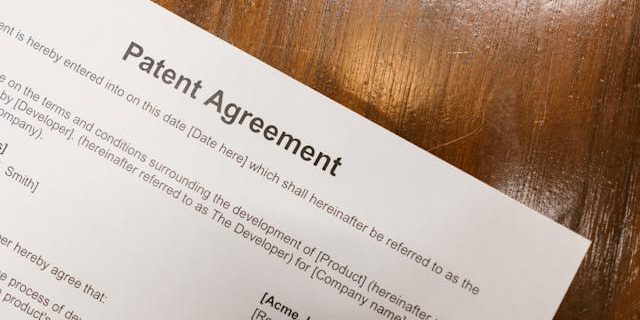Nintendo’s new patents: Chilling for industry creativity
New patents filed by Nintendo raise important questions about how intellectual property rights could limit creativity in gaming. Patents No.12,403,297 and No.12,409,387 cover mechanics viewed as common in the industry, such as summoning a sub-character, controlling that sub-character, and mounting or riding objects over terrain other than the ground.
These patents set a concerning precedent for the industry. Mechanics like mounting objects off-land have appeared in many previous games, suggesting they are industry standards rather than unique innovations by Nintendo.
Nintendo has locked away the mechanics of riding objects on things other than land
Essentially, a patent gives Nintendo the right to “exclude others from making, using, offering for sale or selling” the invention. If someone infringes on your patent, then you can pursue legal action against them in the country where the patent is granted. So, a US patent can only affect the US and its territories.
In effect, Nintendo has locked away the mechanics of riding objects on things other than land, and mechanics designed around a sub-character, for the next 15 years.
These patents only came into effect this year, but were filed during the ongoing “patent infringement lawsuit” against Pocket Pair Inc. on September 18 2024. You may know them as the developers of Palword.
Nintendo currently seeks “an injunction against infringement and compensation for damages on the grounds that Palworld, a game developed and released by the Defendant, infringes multiple patent rights”(September 19 2024).
Nintendo has long influenced the gaming industry alongside companies like Sega and Atari
Simply put, the game and its mechanics are similar to those of Game Freak’s Pokémon, of which Nintendo is a part owner. They say that they will “continue to take necessary actions… to protect the intellectual properties it has worked hard to establish over the years.”
For a long time, Nintendo has influenced the gaming industry alongside companies like Sega and Atari. The main issue is how far an established company like Nintendo should go in patenting gameplay elements that have become common in games, and why previously unchallenged features now face legal scrutiny due to the emergence of Palworld.
It was refreshing to see a Pokémon-like game with good graphics and non-laggy assets. No trees popping in and out, or storefronts copied and pasted across the cities and towns. Many fans have been disgruntled with the quality, so having the chance to play a good-looking game with similar mechanics was welcomed by many. However, Nintendo was seemingly not as pleased.
Palworld has cited several major titles in the ongoing case with similar mechanics, like Final Fantasy, Monster Hunter, and some of Nintendo’s other properties, including The Legend of Zelda. A patent, in the first place, is issued when the idea meets the criteria of being “new or novel”, something that has not been done before. However, this is ongoingly disputed.
I do fear it’s not a coincidence that Nintendo hasn’t gone after triple-A giants like Monster Hunter and Final Fantasy, but rather a smaller indie developer.
Don McGowan, former Chief Legal Officer of the Pokémon Company, claims that the patent will likely be ignored as the argument would never hold up in court. Would small indie developers, however, want to risk potentially being taken to court by such a massive studio like Nintendo?
Nemesis system from the 2014 game, Middle-earth: Shadow of Mordor, was patented by Warner Bros. Discovery until 2036. It involved the AI of the enemy using memories of when they defeated you, or vice versa, to fuel their revenge as they rise through the ranks of the enemy army.
The mechanic was planned to return in future games since 2016, but has been underutilised, and new games like Batman and Hogwarts Legacy have seen no benefit from the new mechanic.
When it stays collecting dust on the shelf, what is the point in even patenting it?
There is an argument for protecting one’s own creation, yet when it stays collecting dust on the shelf, what is the point in even patenting it? I would expect to see it in the coming years, but, as of now, it has not been seen since 2014.
How much should we protect our own ideas compared to allowing the creative freedom of other developers?
I think back to the Souls games and the recent success of Lies of P, made by Round 8 Studio and NEOWIZ – a Souls-like game, not made by the original developers, FromSoftware, who pioneered the genre.
This has made me want to play the original games, and increased the popularity of the genre altogether. They are in competition, but they should see the chance to build off one another.
This is often not the case when the developers are not the guiding hand of the games themselves. Rather, those above them are, who cater to the shareholders. Hopefully, the patents will never hold up in court, and we can protect developers’ rights to creative freedoms.

Comments (2)
I honestly think if people didn’t start stating that it’s pokemon with guns etc then thos wouldn’t happen as like it has been said in the article many games use the same mechanics and have done for years especially way before pokemon was even a game so nintendo and game freak are being in some way a hypocrite as they’ve some how copied other developers but want to patent due to being jealous of palworlds success from a small indie developer gamers have various ideas in there own head how they would like their dream game developed and these patents will make it impossible for old and new developers to create such amazing pieces off art and imaginative concepts because of the fear of nintendo.
If nintendo was that ruffled by palworld why did they not make that decision too make pokemon multi platform?
Nintendo needs to stop being granted generic parents particularly for things they didnt invent.